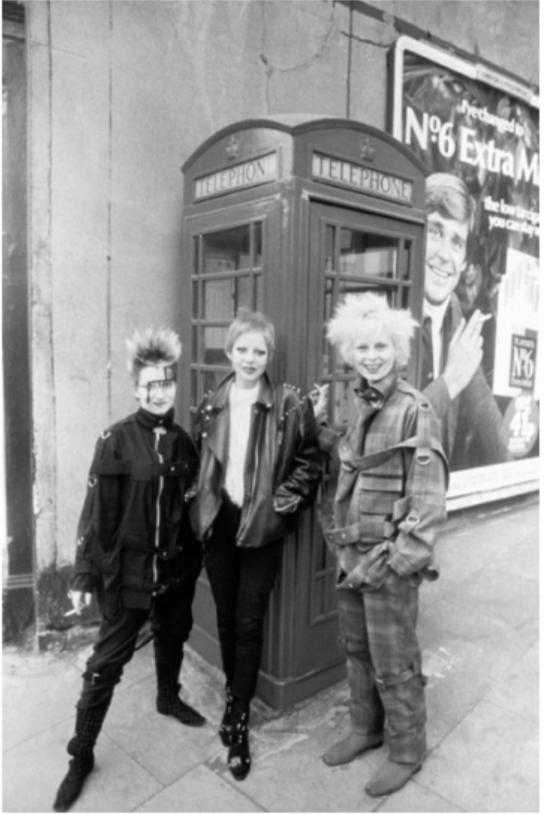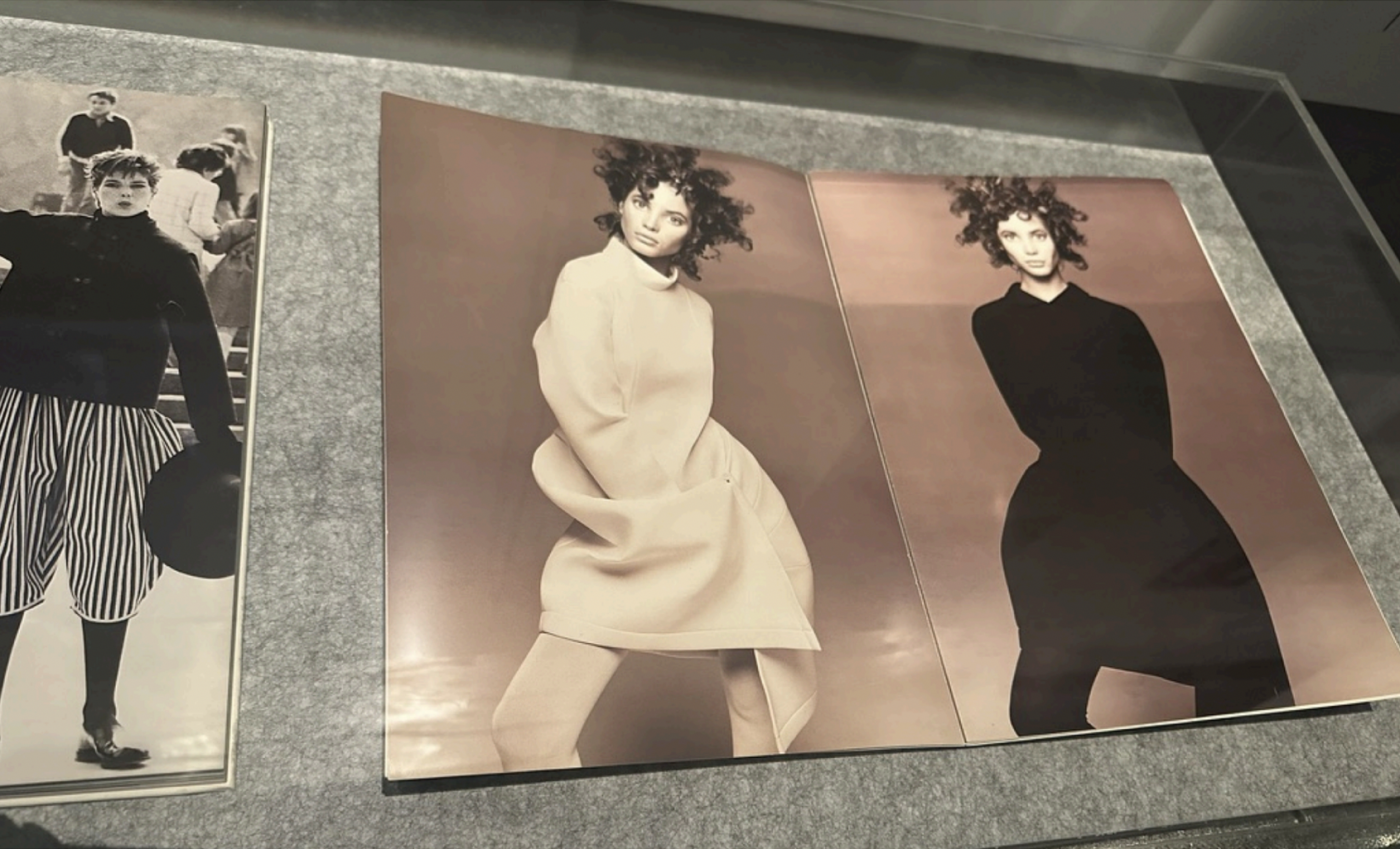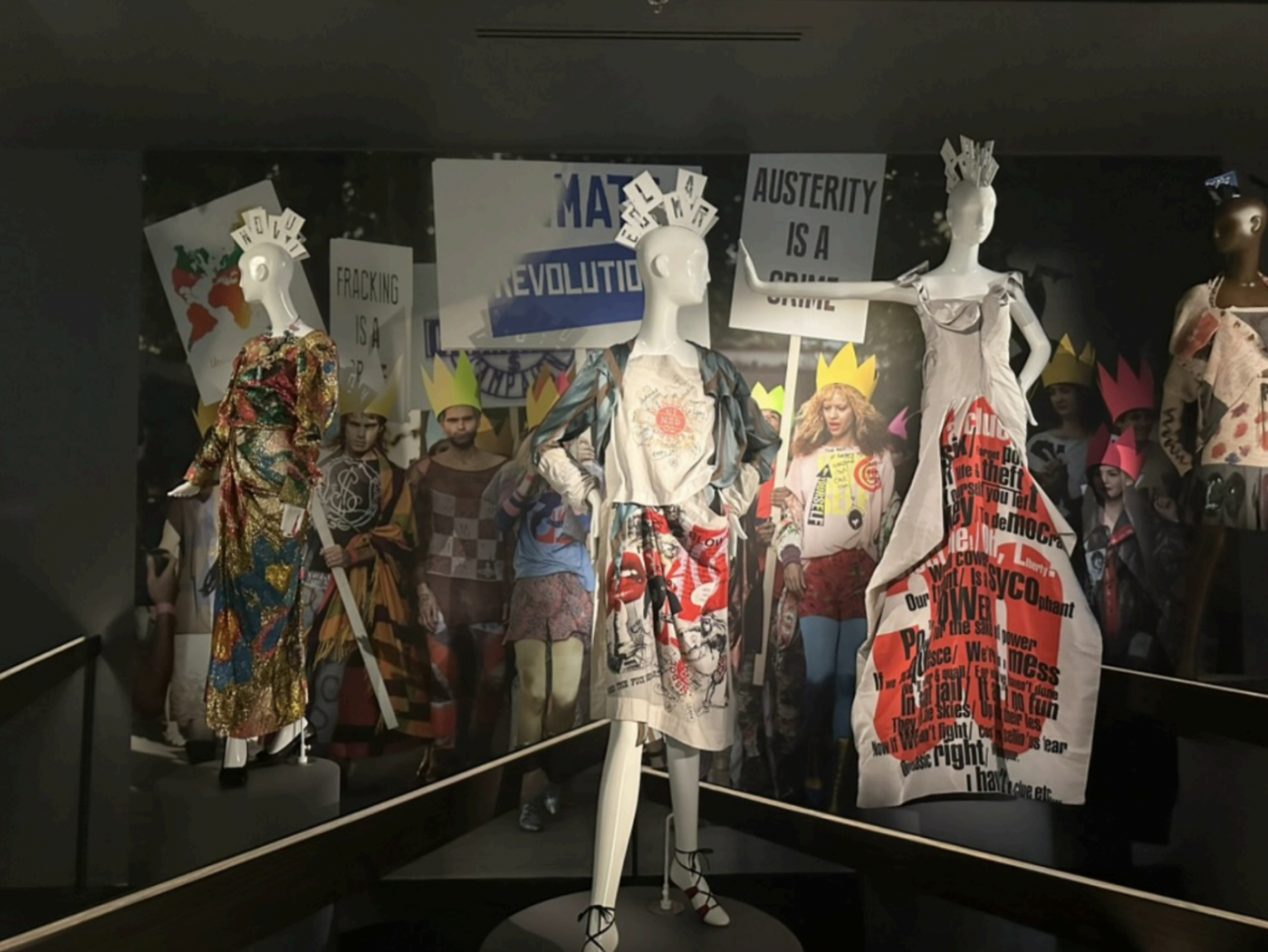- youtube
- bluesky
- Home
- About
- Costume Journal
- Membership
- Conference & Events
- Grants & Awards
- News & Social
In this week's blog post, Costume Society member Jane Francis reviews the Westwood | Kawakubo exhibition currently on view at the National Gallery of Victoria.
I went to the National Gallery of Victoria’s new exhibition, Westwood | Kawakubo. Less a retrospective than a dialogue, the show places two fashion revolutionaries in a curated collision that reveals as much about the evolution of visionary design as it does about the power of dissent.
The exhibition pairs these global icons and iconoclasts of the fashion world for the first time: British designer Vivienne Westwood (1941 – 2022) and Japanese designer Rei Kawakubo (b. 1942) of Comme des Garçons. Born a year apart in vastly different cultural contexts, each brought a rule-breaking radicalism to fashion—subverting the status quo in her own way.
Westwood/Kawakubo is the brainchild of NGV fashion curators Katie Somerville and Danielle Whitfield. ‘It’s the desire to challenge and change fashion norms that connects them‘ says Sommerville. In pairing Vivienne Westwood and Rei Kawakubo, the NGV has undertaken a deceptively simple premise: allow two of fashion’s most uncompromising auteurs to speak to each other across form, politics, and time. The result is a show that feels relevant, right, and unexpectedly emotional.

Comme des Garçons Jumper, from the Holes collection, autumn–winter 1982–83. Paris, 1982. Photo © Peter Lindbergh. Model: Linda Sperrings

Vivienne Westwood with Jordan(Pamela Rooke) and another punk, London, 12 April 1977. Photo © Tim Jenkins / WWD / Penske Media via Getty Images
Vivienne Westwood has been a constant thread throughout my life. As part of Melbourne’s punk, fashion and art scene of the late 70’s to working as part of her creative team in the late 80’s and 90’s in London, I have lived, loved and defined my identity through her work, passion and radical belief in the power of fashion as a platform for positive change. Rei Kawakubo intrigues me equally—her work endlessly inspirational and alive. I have always looked to her for her intellectual rigor and her ability to surprise. Both designers have deeply shaped my understanding of fashion.
On the surface Westwood and Kawakubo share little beyond their cult status. Westwood built an aesthetic from the rubble of post-industrial Britain- storytelling, revolution, activism, tartan, crafted tailoring, and fashion as art—while Kawakubo, founder of Comme des Garçons, has spent five decades dismantling the visual logic of the body itself.
It is important to recognise that both are of similar age, self-taught, independent female designers working in different parts of the world and in distinct cultural contexts. Both explored similar themes across their practices—history, pirates, punk, witches, the deconstruction of tailoring—with the reinvention of the body always central. Each interrogated conventions of taste, gender, and beauty. Both were design powerhouses who pushed the boundaries of what fashion is and what it can mean. They also held deep mutual respect: Kawakubo is known to have visited Westwood’s King’s Road shop many times, and in 2002 the two briefly collaborated on a little-seen Vivienne Westwood / Comme des Garçons collection.
Katie Sommerville explains “There’s lots of reasons why they seem like a good fit, They’re of the same generation and their career trajectory kind of runs in parallel ... they’re also both self-taught ... [and therefore] not constrained by a sense of how one should do something. You’d be hard-pressed to think of two more impactful or influential designers, of any gender, in terms of all of those new ways of doing things, making things, selling things, presenting things. Both designers have been propelled by the idea of newness.”
Milliner Stephen Jones who collaborated with both designers adds “These women forged an entirely new language of clothing much as Vionnet and Chanel before had achieved century before. We cannot approach modern appearance without viewing it through the frameworks they established, the territories they claimed”
“The exhibition pairs these artists not to say that they’re the same, or that they’re from the same kind of artistic movement,” says Danielle Whitfield, “But to say that at the heart of their practices are these ideas of freedom and rebellion and independence and autonomy, and there’s incredible crossover”
Westwood is a media savvy provocateur; she was and is always visually present within everything she does. She is her brand and her namesake label. For her, fashion is about standing out and being yourself.
I realized after Pirate that I didn’t have the qualify my ideas. I could do anything I liked; it was only a question of how I did that would make it original. I realized then I could go on forever..” Vivienne Westwood (Caryn Franklin- Rule Britannia I-D March 1987-p.74)
Kawakubo is more of an enigma... rarely seen, she allows her work to speak under the Comme des Garçons label. It speaks quietly, yet with extraordinary force. The complexity of construction, materiality, and technique may at first seem obscured by the ambition of her silhouettes, yet her precision and attention to detail are undeniable.
“What I create is nothing but an expression of my own issues, what’s inside my head. It’s all about my own values. Of course, I understand those who don’t agree. I accept them. That is freedom” Rei Kawakubo (Vogue Japan 2024- Rei Kawakubo the designer of unanswerable questions)
The exhibition includes works from the NGV Collection alongside selected loans from international museums and private collections, showcasing over 140 designs. Eighty works were gifted by Kawakubo herself especially for the exhibition. Structuring themes include Punk and Provocation, Rupture, Reinvention (history, tailoring, design methods), The Body and The Power of Clothes, each considering different ways in which Westwood and Kawakubo have rewritten fashion convention over the course of their careers.
The NGV’s curatorial team avoids forcing symmetry, instead creating a rhythm of contrasts: Westwood’s historical reinvention opposite Kawakubo’s existential minimalism; sensual provocation beside structural negation. The scenography is one of the exhibition’s great triumphs. Rather than dividing the designers, the space encourages drift. Viewers wander between Westwood and Kawakubo, picking up threads as they go. Carefully considered lighting frames each garment as a sculptural entity without diminishing its broader social context.
A particularly striking gallery stages Westwood’s reinterpretations of historical dress—corsets, crinolines, 18th-century pirate silhouettes—opposite Kawakubo’s exploded and hybrid forms from the Body Meets Dress, Dress Meets Body collection. Westwood pieces from the early 1990’s incorporate hand silk-screened and metallic textile applications, while Kawabubo collages woven intarsia, pattern and surface qualities creating rich, complex and cohesive tapestries. The installation makes a compelling point: Westwood interrogates history; Kawakubo interrogates ontology. Westwood rewrites the past; Kawakubo rewrites the body.

COMME DES GARÇONS 1981-1986 (book) photographer Steven Meisel. Publisher Comme des Garçon detail - © Jane Francis / NGV
Spaces unfold like a dialogue, not a chronology. A corridor of digital displays of both designers’ runway shows leads to a gallery of Westwood’s early punk silhouettes defiant, witty, bristling with political charge—before opening onto Kawakubo’s sculptural dark forms from the 1980s, which ruptured Parisian couture conventions. Seen together, each sharpens the other: Westwood’s rebellion appears almost baroque beside Kawakubo’s severity, while Kawakubo’s restraint gains unexpected warmth in proximity to Westwood’s exuberance.
The show also includes a series of vitrines containing archival objects, magazines, curated catwalk films, the recently discovered original card-pattern pieces for Westwood’s iconic 1986 Harris Tweed crown, and a rare copy of Comme des Garçons Visionaire 20.
Both designers have always made clothing that is political. This exhibition leans into that complexity. Westwood’s ongoing environmental activism sits beside her flirtations with provocation and aristocratic iconography. Kawakubo’s radical non-gendered silhouettes appear alongside pieces that question beauty, form, and consumption. Visitors are invited to confront fashion as a site of power.
“I’ve always had a political agenda, I’ve used fashion to challenge the status quo”- Vivienne Westwood-(Kristian Bateman’ Vivienne Westwood is the original riot grrrl: L’Officiel 3rd April 2018)
“Society needs something new, something with the power to provide stimulus and the drive to move us forward... Maybe fashion isn’t enough to change the world, but I consider it my mission to keep pushing and to continue to propose new ideas..” Rei Kawakubo-(Yomhuri Shimbun newspaper– 12th January 2016)
Despite their intellectual reputations, the works carry surprising emotional charge. In the final gallery, a pair of stark Kawakubo pieces faces a riot of Westwood pattern, colour, and activism—a perfect juxtaposition of two designers who changed the rules without ever asking permission.

Vivienne Westwood, London fashion house England est. 1984 Vivienne Westwood designer England 1941–2022 Look 41, dress, necklace and shoes 2008 Chaos Point collection, autumn–winter 2008–09viscose silk (hand painted) leather, brass, crystal Vivienne Westwood Heritage, London
Dress 2005 Propaganda collection, autumn–winter 2005–06 viscose, silk, cotton, metal and plastic (fastenings)Gift of Krystyna Campbell-Pretty AM and Family through the Australian Government’s Cultural Gifts Program, 2024
Look 56, 56 dress 2007-56 collection, spring–summer 2008 silk (twill), leather, crystal. Vivienne Westwood Heritage, London. Display headpieces by Stephen Jones © Jane Francis / NGV
In bringing Westwood and Kawakubo together, the NGV has created a show that feels less like a retrospective and more like a manifesto. It offers not simply a survey of two legendary careers but a meditation on how fashion can resist, disrupt, and imagine differently. It reminds us that the best fashion is radical, is not about what we wear but how we choose to see, think and dress...
Accompanying Westwood | Kawakubo is a large format, visually stunning and image rich catalogue published by the NGV, capturing the history, context, and bodily qualities of the garments in the exhibition. Edited and Introduced by the exhibition’s curators: Katie Somerville and Danielle Whitfield the publication includes contributions from internationally acclaimed authors, photographers and creative voices including: Jane Mulvagh, Zandra Rhodes, Chrissie Hynde, Akiko Fukai, Stephen Jones, Paolo Roversi, Valerie Steele, Bella Freud, Ki Price and Alexander Fury.
The exhibition is open at the NGV Melbourne until 19th April 2026.
To read more from Jane, revisit her recent review of Dirty Looks at the Barbican centre on our blog.